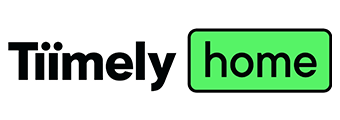The federal government's Clean Energy Finance Corporation (CEFC) is investing up to $60 million in a green home loan program for borrowers who meet a minimum seven-star energy rating.
Bank Australia is the first lender to take up the scheme through its new Bank Australia Clean Energy Home Loan which will offer eligible borrowers a 0.4% discount on their home loan interest rate for up to five years for mortgages below $1.5 million.
According to the CEFC, this will be "the first Australian green home loan to use energy efficiency measurement tools to determine eligibility".
The discount applies to borrowers who buy or build homes which achieve a minimum of 7-stars under the Nationwide House Energy Rating Scheme (NatHERS). A six-star energy rating is the minimum standard in most states and territories.
The Clean Energy Home Loan is available on Bank Australia's Premium Package Home Loan for new and existing customers, including refinancers.
The 2.44% p.a. interest rate is available as a two-year fixed rate (3.50% p.a. comp rate*) or a three year fixed rate (3.43% p.a. comp rate) to borrowers with an loan-to-value ratio (LVR) of under 70%.
The Clean Energy Home Loan is also available at a variable rate of 2.78% p.a. (3.39% p.a. comp rate) for those borrowing over $500,000 at an LVR of less than 70%.
CEFC CEO Ian Learmoth said the green home loan will spearhead the construction of market leading, energy efficient housing.
"This green home loan will fill a gap in the market, giving builders and new home buyers a financial incentive to adopt sustainable design principles from the start of the project," Mr Learmoth said.
"New homes built today will be in use for decades to come. We want those homes to have the strongest energy efficiency and to deliver the smallest carbon footprint possible.
"Australians are already leading the world in residential rooftop solar. Our next challenge is to embrace better building design and construction methods, as well as energy efficiency, to cut our energy use and reduce our emissions."
The table below displays a selection of variable-rate home loans on offer, featuring a low-rate pick from each of the following three categories: the big four banks, the top 10 customer-owned banks, and the larger non-banks.
| Lender | Home Loan | Interest Rate | Comparison Rate* | Monthly Repayment | Repayment type | Rate Type | Offset | Redraw | Ongoing Fees | Upfront Fees | Max LVR | Lump Sum Repayment | Additional Repayments | Split Loan Option | Tags | Row Tags | Features | Link | Compare | Promoted Product | Disclosure |
|---|---|---|---|---|---|---|---|---|---|---|---|---|---|---|---|---|---|---|---|---|---|
5.74% p.a. | 5.65% p.a. | $2,915 | Principal & Interest | Variable | $0 | $0 | 80% |
| Promoted | Disclosure | |||||||||||
5.79% p.a. | 5.80% p.a. | $2,931 | Principal & Interest | Variable | $0 | $0 | 90% | ||||||||||||||
5.75% p.a. | 5.75% p.a. | $2,918 | Principal & Interest | Variable | $0 | $0 | 90% | ||||||||||||||
5.84% p.a. | 5.88% p.a. | $2,947 | Principal & Interest | Variable | $0 | $0 | 80% |
| |||||||||||||
6.14% p.a. | 6.14% p.a. | $3,043 | Principal & Interest | Variable | $0 | $0 | 60% | ||||||||||||||
6.19% p.a. | 6.20% p.a. | $3,059 | Principal & Interest | Variable | $0 | $0 | 97% |
Bank Australia Managing Director Damien Walsh said in the coming months the bank will extend the benefits of the Clean Energy Home Loan for existing homeowners that implement eligible sustainable upgrades, such as energy monitoring and energy storage systems, solar hot water and energy efficient air conditioning.
The Clean Energy Home Loan will also feature an 'Eco-pause' option which allows customers to take a break from their mortgage repayments and redirect their money to eco-upgrades, such as solar panels, batteries and water tanks.
The property sector accounts for almost a quarter of Australia's greenhouse gas emissions, according to the Australian Sustainable Built Environment Council (ASBEC).
Half of those emissions come from residential buildings, mostly as a result of heating and cooling, lighting and hot water systems.
Mr Walsh said Australia needs more sustainably designed and built homes to reduce emissions and address climate change.
"Homes are built for the long haul. It's predicted that more than half the properties that'll be standing in 2050 will be built from now onwards," he said.
"This means that the housing decisions we make today will impact emissions - we just have to decide if we want that to be a positive or negative impact. We want to help homeowners and buyers who make sustainable choices to create positive impact.
"I want a future where every buyer asks for the energy efficiency certificate when they inspect a property, for real estate websites to have a '7+ stars' filter, and real estate agents to promote energy efficiency ratings as a key selling point."
Mr Walsh said the decision to launch the Clean Energy Home Loan was driven by their customers.
"Our research tells us that our customers care deeply about sustainability and climate change, which was a big driver for us to launch a home loan that supports them to reduce the environmental impact of their homes."
A report from ASBEC and ClimateWorks Australia identified potential energy savings as high as 25% through the adoption of higher clean energy standards in new residential buildings.
The report found the upfront costs would be more than offset by the energy bill savings, reduced spend on heating, cooling and ventilation equipment, and electricity network savings.

Ready, Set, Buy!
Learn everything you need to know about buying property – from choosing the right property and home loan, to the purchasing process, tips to save money and more!
With bonus Q&A sheet and Crossword!









 Denise Raward
Denise Raward


 William Jolly
William Jolly
